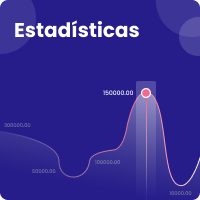Revisión de diferentes perspectivas geoespaciales para la identificación y mitigación de potenciales amenazas de seguridad a plataformas satelitales
DOI:
https://doi.org/10.18667/cienciaypoderaereo.704Palabras clave:
satélites, ciberseguridad, tecnología geoespacial, aprendizaje automático, observación terrestreResumen
La infraestructura satelital juega un papel vital en el mundo moderno. Cada vez más sistemas dependen de esta tecnología, lo que ha generado que se convierta en un blanco de amenazas de seguridad. La existencia de estos riesgos potenciales ha sido reconocida a nivel internacional, por lo cual cada vez se destinan más recursos a estudiar y entender dichas amenazas. Ante este escenario, el estudio de las tecnologías satelitales desde una perspectiva geoespacial provee un entendimiento del tipo conciencia situacional sobre el ecosistema tecnológico y sus fortalezas, limitaciones y vulnerabilidades. Nuevas tecnologías como la inteligencia artificial, el aprendizaje automático y el blockchain deben ser estudiadas a fin de generar contramedidas de seguridad para las tecnologías satelitales.
Descargas
Referencias
Chen, K. S. (2016). Principles of synthetic aperture radar imaging: A system simulation approach. CRC Press. https://doi.org/10.1201/b19057
Chuvieco, E. (1990). Fundamentos de teledetección espacial. Ediciones Rialp.
Copernicus.(2021).Copernicusservices.https://www.copernicus.eu/en
CubeSat. (2018, March 20). CubeSat. http://www.cubesat.org/
Fritz, J. (2013). Satellite hacking: A guide for the perplexed. Culture Mandala, 10(1), 5906.
Geospatial Media Communications. (2017). Global geospatial industry report. Geospatial Media Communications.
Hackasat. (2020). Home. https://www.hackasat.com
Humphreys, T. E., Ledvina, B. M., Psiaki, M. L., O'Hanlon, B. W., & Kintner, P. M. (2008). Assessing the spoofing threat: Development of a portable GPS civilian spoofer. Proceedings of the 21st International Technical Meeting of the Satellite Division of The Institute of Navigation. Institute of Navigation. http://www.ion.org/publications/abstract.cfm?jp=p&articleID=8132
Iacobellis, M., Amodio, A., & Drimaco, D. (2020). Cyber-security threats to space missions and countermeasures to ad- dress them. 71st International Astronautical Congress (IAC) - The CyberSpace Edition, IAC-20-E9.2.D5.4.
ISIS Space. (2020, September 13). ISIS CubeSat development platform. ISIS Space. https://www.isispace.nl/product/isiscubesat-development-platform/
Kleos Space. (2021). Delivering RF reconnaissance data-as-a- service. Kleos Space. https://kleos.space/
Korean Aerospace Research Institute [KARI]. (2021). Korea Multi-Purpose Satellite (KOMPSAT, Arirang). KARI. https://www.kari.re.kr/eng/sub03_02_01.do
Kothari, V., Liberis, E., & Lane, N. D. (2020). The final fron- tier: Deep learning in space. ArXiv:2001.10362. http://arxiv.org/abs/2001.10362
Malik, W. J. (2019, July 26). Attack vectors in orbit the need for IoT and satellite security [Conference session]. RSA Conference 2019, San Francisco, CA, USA. http://www.rsaconference.com/industry-topics/presentation/attack-vectors-in-orbit-the-need-for-iot-and-satel- lite-security
Manning, J., Langerman, D., Ramesh, B., Gretok, E., Wilson, C., George, A., MacKinnon, J., & Crum, G. (2018). Machine-learning space applications on smallsat platforms with TensorFlow. 32nd Annual AIAA/USU Conference on Small Satellites. https://digitalcommons.usu.edu/smallsat/2018/all2018/458
Planet. (2021). Homepage. https://www.planet.com/
Radio Amateur Satellite Corporation [AMSAT]. Home. (2020). AMSAT. https://www.amsat.org/
Richards, J. A. (2009). The imaging radar system. In J. A. Richards (Ed.), Remote Sensing with Imaging Radar (pp. 1-10). Springer. https://doi.org/10.1007/978-3-642-02020-9_1
Roundtable on Sustainable Palm Oil [RSPO]. (2021). Home. https://rspo.org/
SatNOGS. (2020, September). SatNOGS. https://satnogs.org/
The CubeSat Simulator Project Page. (2020). Home. http://www.cubesatsim.org/
Tullis, P. (2019, December 1). GPS is easy to hack, and the U.S. has no backup. Scientific American. https://www. scientificamerican.com/article/gps-is-easy-to-hack- and-the-u-s-has-no-backup/

Descargas
Publicado
Número
Sección
Licencia
Derechos de autor 2021 Escuela de Postgrados de la Fuerza Aérea Colombiana

Esta obra está bajo una licencia internacional Creative Commons Atribución 4.0.
Declaración de cesión de los derechos de autor a la revista
Los autores ceden la Revista los derechos de explotación (reproducción, distribución, comunicación pública y transformación) para explotar y comercializar la obra, entera o en parte, en todos los formatos y modalidades de explotación presentes o futuros, en todos los idiomas, por todo el periodo de vida de la obra y por todo el mundo.
Todos los contenidos publicados en la revista científica Ciencia y Poder Aéreo están sujetos a la licencia reconocimiento 4.0 Internacional de Creative Commons, cuyo texto completo se puede consultar en http://creativecommons.org/licenses/by/4.0/
La licencia permite a cualquier usuario descargar, imprimir, extraer, archivar, distribuir y comunicar públicamente este artículo, siempre y cuando el crédito se dé a los autores de la obra: a los autores del texto y a Ciencia y Poder Aéreo, Revista Científica de la Escuela de Postgrados de la Fuerza Aérea Colombiana. Excepto cuando se indique lo contrario, el contenido en este sitio es licenciado bajo una licencia Creative Commons Atribución 4.0 internacional.
Para usos de los contenidos no previstos en estas normas de publicación es necesario contactar directamente con el director o editor de la revista a través del correo cienciaypoderaereo@epfac.edu.
La Escuela de Postgrados de la Fuerza Aérea Colombiana y esta publicación no son responsables de los conceptos emitidos en los artículos, ni de los metadatos aportados ni de las filiaciones que los autores declaren, ya que esta es responsabilidad plena de los autores.





















